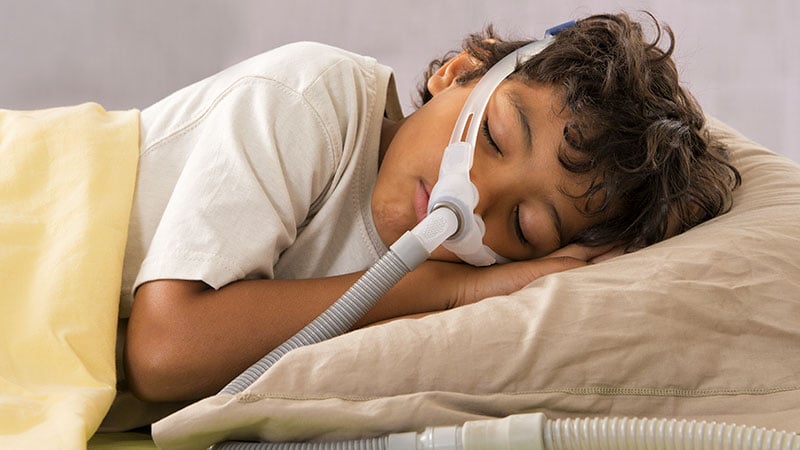TOPLINE:
Periodic limb movements in sleep (PLMS) were found to be common in children with obstructive sleep apnea (OSA), with age and severity of OSA influencing its prevalence. In most cases, adenotonsillectomy effectively resolved PLMS.
METHODOLOGY:
- Researchers conducted a retrospective study to evaluate the prevalence of PLMS in children with OSA and assess the effect of adenotonsillectomy on these movements.
- They enrolled 1159 children (median age, 5 years; 58.3% boys) with OSA who underwent adenotonsillectomy between January 2022 and July 2023 at a tertiary care children’s hospital.
- The severity of OSA was categorized using the obstructive apnea-hypopnea index as mild (1-4 events per hour), moderate (5-9 events per hour), or severe (10 or more events per hour).
- Elevated periodic limb movement index (PLMI) was measured as PLMS per hour before and after adenotonsillectomy, with an elevated PLMI defined as more than 5 events per hour.
TAKEAWAY:
- Children older than 5 years had a higher prevalence of an elevated PLMI than those younger than 5 years (odds ratio, 0.3; P < .001).
- The odds of elevated PLMI were 2.3 times higher in children with moderate OSA (P = .007) and 1.9 times higher in those with severe OSA (P = .01) than in those with mild OSA.
- The PLMI significantly reduced after adenotonsillectomy (11.9 vs 2.9; P ≤ .001). Among 54 children with an elevated PLMI who underwent follow-up polysomnography, 85% showed resolution after adenotonsillectomy.
- Children with residual OSA had a higher PLMI than those without residual OSA (P = .04).
IN PRACTICE:
“The potential clinical implications of our findings are the consideration of AT [adenotonsillectomy] for the initial management of children with OSA and elevated PLMI and counseling caregivers regarding the treatment of elevated PLMI,” the authors of the study wrote.
SOURCE:
This study was led by Amor Niksic, University of Texas Southwestern Medical Center, Dallas. It was published online on June 07, 2025, in The Laryngoscope.
LIMITATIONS:
The retrospective study design limited data collection on sleep characteristics, patient symptoms, the impact of adenotonsillectomy on symptoms, and serum ferritin levels. Additionally, the small number of children who underwent polysomnography before and after adenotonsillectomy may have affected the detection of differences in subgroup analyses.
DISCLOSURES:
The authors reported receiving no specific funding for this work and reported having no conflicts of interest.
This article was created using several editorial tools, including AI, as part of the process. Human editors reviewed this content before publication.
Source link : https://www.medscape.com/viewarticle/surgery-resolves-limb-movements-pediatric-sleep-apnea-2025a1000hvs?src=rss
Author :
Publish date : 2025-07-07 10:58:00
Copyright for syndicated content belongs to the linked Source.
